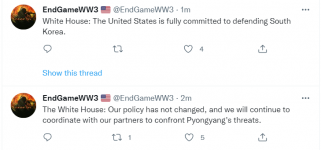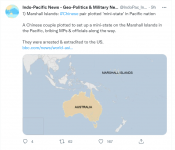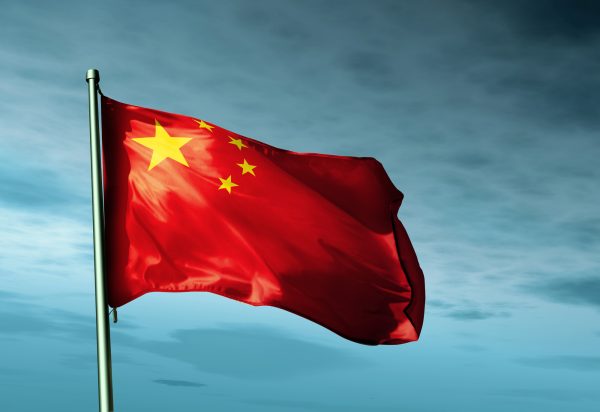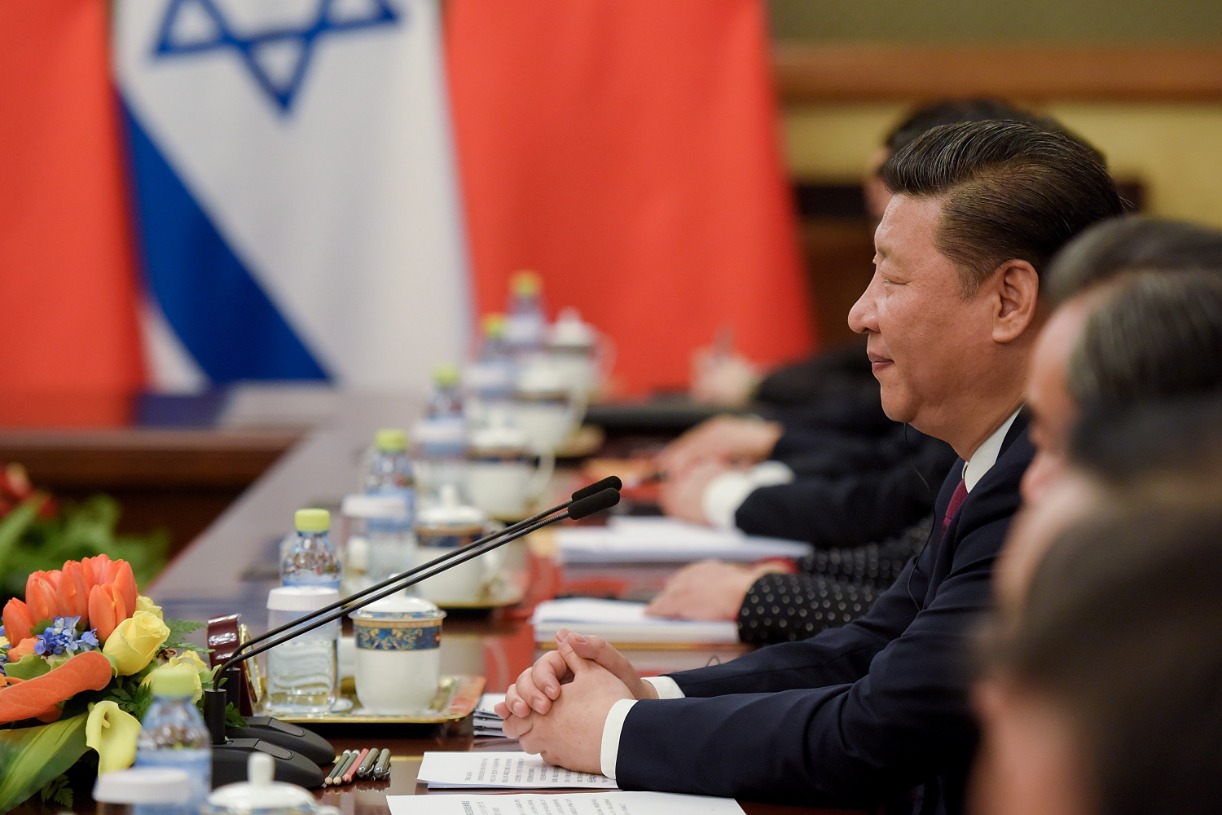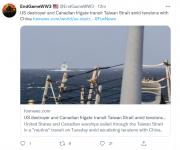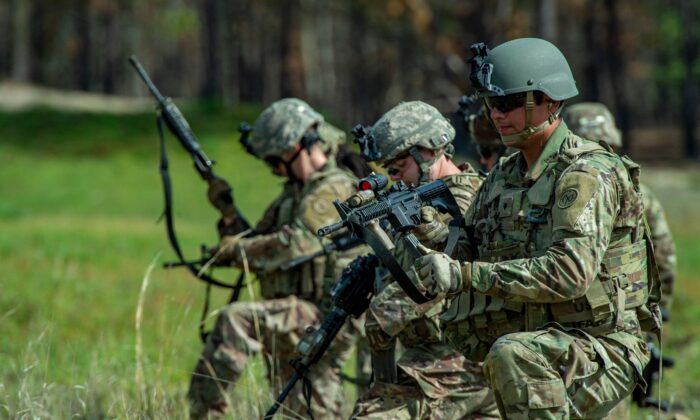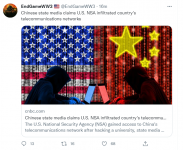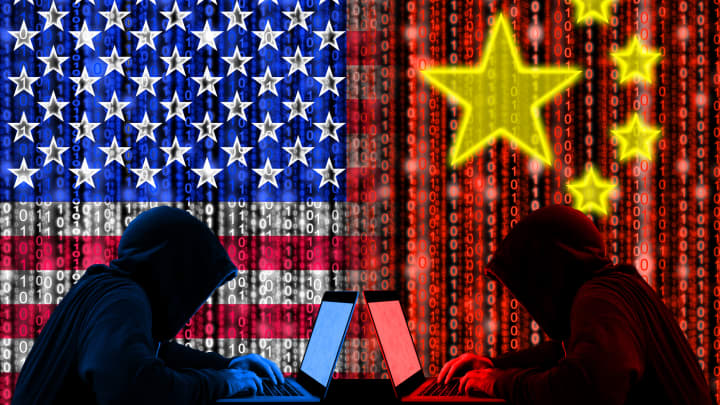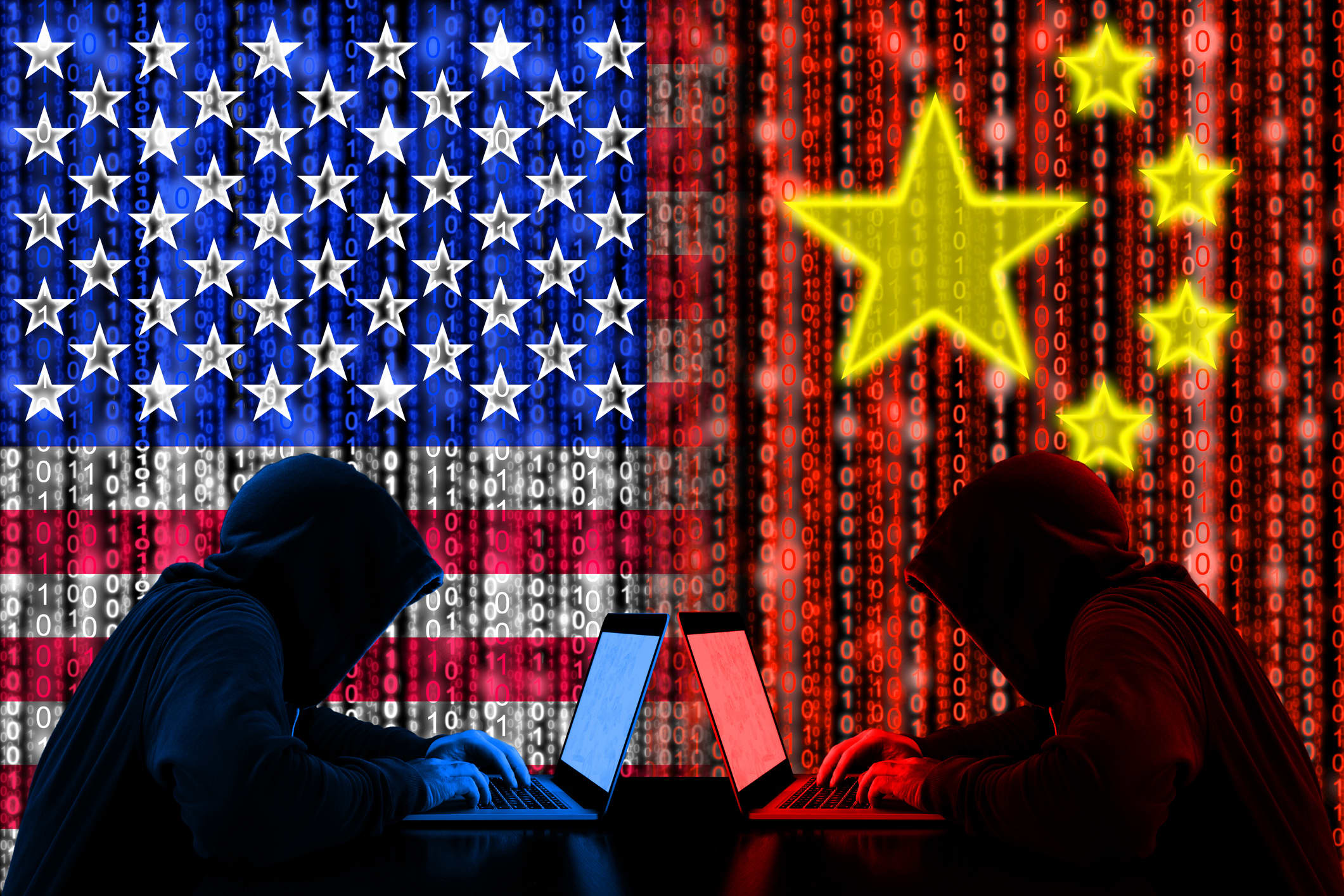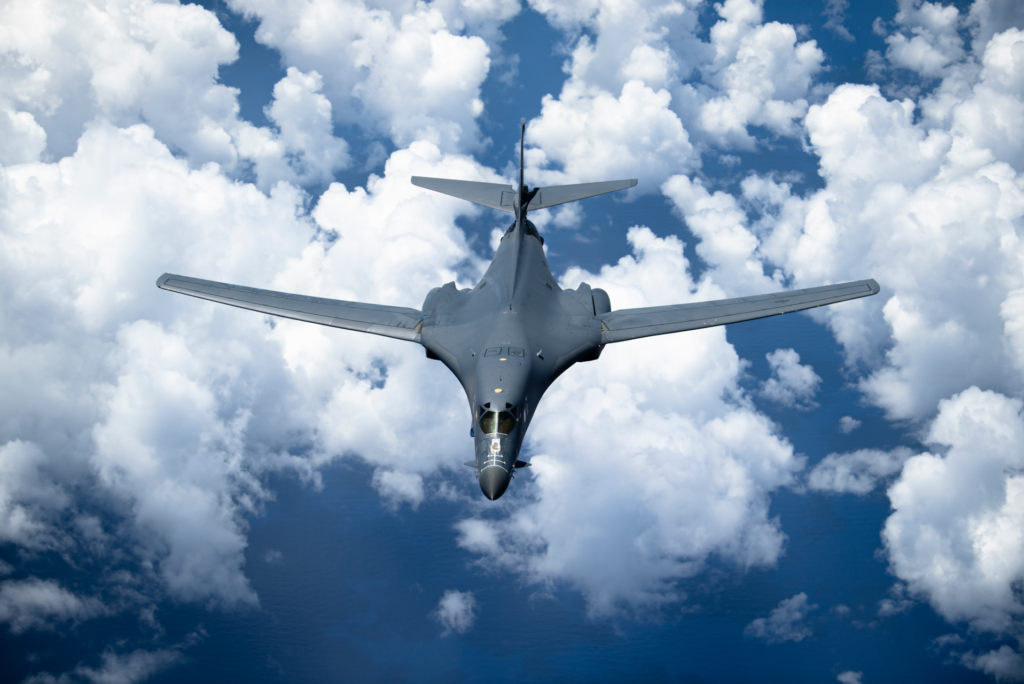Defeat China's Navy, Defeat China's War Plan - War on the Rocks
Robert Haddick
12-15 minutes
We are seeking to fill two positions on our editorial team: An editor/researcher and a membership editor. Apply by Oct. 2, 2022.
Washington has already lost the war for Taiwan — at least according to the most recent wargames organized by the
Center for Strategic and International Studies. The think tank’s simulation of a conflict between the United States and China saw several U.S. aircraft carrier strike groups sunk, hundreds of U.S. combat aircraft destroyed, and thousands of U.S. military personnel lost in the war’s opening days.
These games, planned long before the most recent Taiwan crisis and set in 2026, add to decades of analyses of the Taiwan scenario conducted at war colleges and think tanks on both sides of the Pacific Ocean. Scheduled to be written up later this year, the games have reinforced at least one previously
well-known conclusion: should the United States attempt to fight the battle for Taiwan relying mainly on military forces located west of Guam, U.S. losses will be severe. The United States and its allies might stalemate the People’s Liberation Army. But the cost could very well be too high for U.S. society to sustain. And if China’s leaders believe this, even wrongly, deterrence will collapse, and the risk of war will rise.
U.S. commanders in the Indo-Pacific will have to fight with the forces and weapons policymakers provide them. Recent wargames, like their predecessors, demonstrate the United States needs a better plan for defeating an attack on Taiwan. This means forces and concepts that match U.S. competitive advantages against China’s weaknesses while minimizing the number of forces U.S. commanders will have to position within range of China’s firepower.
Fortunately, a better matchup exists, one that focuses the U.S. bomber force against China’s navy and other maritime assets. China cannot take Taiwan, the Senkakus, or other territories in the region if its maritime power is destroyed. The U.S. bomber force could be a mortal threat to China’s maritime power if U.S. policymakers and military planners begin to properly prioritize it. By making China’s maritime assets the main target for the U.S. bomber force, then arming it accordingly, Washington would be well positioned to win a counter-maritime campaign in the western Pacific.
The Short, Unhappy Life of the Stand-In Force
U.S. stand-in forces, those based inside China’s missile range, are an important
political commitment to America’s exposed allies in the region. At the same time, U.S. policymakers have overwhelmingly favored the acquisition of short-range tactical aircraft. The U.S. Air Force’s fighter-to-bomber ratio
is currently 15.8-to-1 and all the U.S. Navy and Marine Corp strike aircraft are short-range. As a result,
a stand-in force is one of the few choices available to commanders responsible for deterring or defeating a prospective Chinese assault.
China’s “counter-intervention” force structure is built around a long-range sensor-missile battle network that is designed to lure in and destroy high-profile U.S. forces such as aircraft carrier strike groups. A U.S. plan that crowds ever more vulnerable military assets inside the Chinese army’s 3,000-kilometer missile engagement zone would only enhance the lethality of Beijing’s response.
U.S. military planners have studied how to disrupt China’s kill chain targeting U.S. forces. But China, like the United States, is launching new, distributed, resilient, and redundant imaging and communication
satellite constellations to support its long-range sensor-missile battle network. These new constellations, each composed of scores, hundreds, and even thousands of small, networked satellites, will make breaking the kill chain very difficult for both sides.
According to the annual
Military Balance database from the International Institute of Strategic Studies, the Chinese air force and navy operate over 200 bombers and roughly 1,400 fighter-attack aircraft, forces that have doubled over the past decade and continue to grow. Assuming the Chinese air force flies one-third of its fighter-attack and bomber aircraft daily (a conservative
estimate during an extended air campaign), Chinese airpower could deliver about 1,400 precision land-attack and anti-ship missile shots per day, with several hundred able to reach fixed bases and surface warships as far away as Guam and the Second Island Chain.
Given this missile power, it is little surprise that multiple iterations of the Center for Strategic and International Studies’ wargame predicted the
destruction of two U.S. aircraft carriers and their carrier air wings. Another
iteration saw the destruction of 900 U.S. aircraft, most lost on the ground from missile impacts on the handful of hub and dispersal bases available to U.S. and allied forces in the western Pacific. Another wargame had surviving U.S. aircraft carriers and warships
fleeing east at flank speed to avoid destruction, a maneuver not likely to inspire much fighting spirit in the troops left behind to cope with China’s daily saturation missile bombardments.
These wargames are not the first to show such results. Chinese planners hope that tens of thousands of U.S.
casualties inflicted over just a few days will result in demoralization and political defeat. With expected losses an order of magnitude higher than Pearl Harbor or 9/11, these planners could be right. But even if they are not, U.S. policymakers do not need to take this risk. Instead of deploying large numbers of stand-in forces within range of Chinese missiles, Washington should instead take advantage of its long-range striking power.
How to Fight From the Outside
The U.S. bomber force, even at just 141 aircraft, is a good matchup against the Chinese navy and China’s overall maritime capacity. The U.S. Office of Naval Intelligence
forecasts that by 2030 China’s maritime force will total over 800 warships, quasi-military coast guard cutters, and large “
maritime militia” ships. With the addition of large commercial cargo vessels, the Chinese maritime force for an invasion of Taiwan would likely number over a thousand surface ships.
Against this, U.S. bombers would be a stand-off force, operating from many bases largely outside the Chinese military’s reach and supported by the Air Force’s large and widely distributed airborne tanker force. A bomber-led campaign against China’s maritime assets would allow the United States to avoid exposing most of its stand-in forces, such as aircraft carriers, short-range strike aircraft, and ground troops, to the Chinese military’s firepower.
The bomber force would begin its attacks with long-range munitions, which reduce the risk to the aircraft themselves. For example, if the bomber force flew roughly one-third of its aircraft each day, it could deliver about 800 long-range missiles daily at fixed and moving maritime targets, at least until the bombers expended all these expensive and exotic munitions. New imaging and communication
satellite constellations, operated by both the U.S. Space Force and private sector actors, could support the bombers’ counter-maritime mission.
Once the entire stockpile of stand-off missiles is depleted, it would be too dangerous for the non-stealthy B-52H and B-1B bombers to continue the counter-maritime campaign west of the First Island Chain. But America’s stealthy bombers could continue with shorter-range munitions.
How many stealthy bombers will the Air Force have in 2026? There are the 20 B-2As, perhaps 16 of which would be coded for combat. And there is the new B-21 Raider. Earlier this year, Air Force Secretary Frank Kendall
surprised listeners when he revealed that Northrup Grumman had five B-21s under assembly, not just two prototypes as was previously assumed. And the Air Force plans to buy at least one hundred B-21s by the mid-2030s.
This means the U.S. military will have at least ten or fifteen B-21s assembled by 2026. One open-source
analysis projected 20 B-21s on hand by 2027. Between the B-2A force and a handful of B-21s in 2026, the Air Force could reasonably anticipate a rate of ten stealthy bombers sorties per day against China.
By one estimate, that could yield over 300 1,000-pound precision weapon strikes per day against Chinese maritime targets, each delivering the same warhead weight as a Long-Range Anti-Ship Missile.
Munitions
Under
current budget plans, the U.S. Air Force will have about 7,000 joint air-to-surface stand-off missiles and 149 long-range anti-ship missiles on hand in 2026. Launching 800 missiles per day would consume the entire stockpile of these long-range missiles in under ten days. That would put the United States in a dangerous position, even after striking Chinese forces that many times with precision 1,000-pound warheads.
The Air Force is also acquiring the Small Diameter Bomb II, or “Storm Breaker.” This is a lightweight munition designed to precisely strike moving targets up to forty miles away, day and night, in all weather, while overcoming enemy countermeasures.
The service plans to have 6,023 of these weapons ready by 2026. As demonstrated by the Air Force Research Lab’s
“Quicksink” tests, these munitions could be complemented by attaching precision-attack sensors on standard 2,000-pound bombs.
Mark Gunzinger of the Mitchell Institute for Aerospace Studies has
proposed a new affordable mid-range munition that would allow the Air Force’s stealthy bombers to attack targets at a safe range from air defenses while also being cheap enough for the service to acquire rapidly and in large numbers. Gunzinger’s solution, using existing and proven components, would sustain a campaign against the Chinese Navy past ten days. This munition would maximize the competitive advantages of the stealthy B-2A and B-21 bombers.
With a better munitions plan, the Air Force’s bombers would be a strong matchup against China’s maritime forces. Yet when asked last year by a journalist why the Air Force plans to buy as many as 7,547 joint air-to-surface standoff missiles – which are deadly, but only against fixed targets – and just 179 long-range anti-ship missiles over the life of that program, an Air Force acquisition general
replied that it was due to “the target set we’re going after.”
Conclusion
Destroying China’s maritime power would end China’s capacity for conquest in the western Pacific. Yet the Chinese navy is not an Air Force priority, despite its vulnerability to U.S. bombers. As Taiwan-focused wargames show, the
shortage of U.S. anti-ship munitions represents a missed opportunity that will come with high costs.
Civilian policymakers should make China’s maritime forces a top targeting priority for the U.S. bomber force. First, they should require Air Force officials to explain how their munitions strategy supports deterrence by denial against Chinese forces. Following that, they could demand the Air Force fund the rapid development of Mark Gunzinger’s affordable mid-range munition and acquire, say, 2,000 long-range anti-ship missiles, even if this means acquiring fewer joint air-to-surface standoff missiles. Policymakers could also demand the Air Force repair and return to service some of the 17 B-1B
bombers that were recently sent to the boneyard despite each being able to carry 24 long-range anti-ship missiles. These relatively minor expenses would quickly add substantial striking power against the Chinese Navy.
More broadly, policymakers should recognize that the sensor-missile military-technical revolution has transformed the Indo-Pacific into a military theater where long-range aerospace power dominates. America’s aerospace power is an enduring competitive advantage that matches up well against several Chinese vulnerabilities, starting with its navy.
Exploiting this competitive advantage is the most direct way to strengthen U.S. deterrence in the Indo-Pacific region.
Robert Haddick is a visiting senior fellow at the Mitchell Institute for Aerospace Studies, Air & Space Forces Association. Naval Institute Press just published his new book “Fire on the Water, Second Edition: China, America, and the Future of the Pacific.” He is also the director of research at Champion Hill Ventures, based in Chapel Hill.
We are seeking to fill two positions on our editorial team: An editor/researcher and a membership editor. Apply by Oct. 2, 2022. Washington has already
warontherocks.com


/cloudfront-us-east-2.images.arcpublishing.com/reuters/OLQ4SG7XWRMB3PXB4JRZMDUXSQ.jpg)
